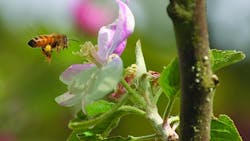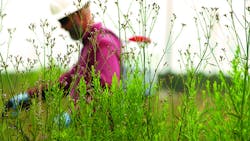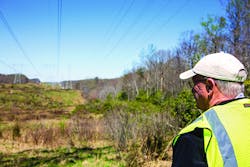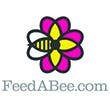Keeping the Balance: Integrated Vegetation Management (IVM)
Vegetation managers go ahead of the rest, clearing a path so others can pass safely. Taming the wild so the land can be as beautiful, productive and valuable as possible. This includes roadside vegetation management and utility rights-of-way (ROW) corridors, designated to ensure safe transportation and energy transmission. Uncontrolled and invasive vegetation growing in critical areas can result in power outages or prevent crews from maintaining the safety and operation of these areas. To address these issues, Bayer supports Integrated Vegetation Management, a method proven effective in managing vegetation while improving habitats for wildlife as well as pollinators. Our goal is to provide solutions that help vegetation managers develop sustainable vegetation — such as native forbs (wildflowers), shrubs and grasses that do not interfere with overhead power lines or underground pipelines, pose a safety hazard for highway drivers or wildfires, or hamper access to these areas — while supporting healthy environments.
How Bayer Supports Pollinators
At Bayer, we support and encourage programs that target undesirable plants, such as incompatible tall growing trees and invasive weeds, while allowing native flowering vegetation to prosper. Through Integrated Vegetation Management best practices, important designated land uses such as electric and gas utilities can be efficiently maintained while enhancing pollinator habitats. By combining control methods – both mechanical and chemical – with appropriate herbicides and timing, we take advantage of biological controls that encourage the natural order of plant competition (and wildlife consumption) while ridding the area of undesirable weeds. Over time, this reduces the need and carbon footprint of mechanical (mowing and cutting) maintenance; lowers utility costs to consumers; minimizes habitat disturbances such as erosion, sedimentation and wildlife disruption; and reduces the threat to nesting animals or endangered species while permitting early successional vegetation and native plants to thrive.
The Bayer Commitment to Bees
Bees, butterflies, beetles and other pollinating insects are critical to modern agriculture and part of the natural ecosystem. Without their pollination of flowering plants, including native vegetation and crop species, the ability to maintain our food supply and feed the world’s increasing population would be challenged. Together, these pollinators help sustain nearly one-third of the food supply — so we are committed to ensuring they not only survive, but thrive for generations to come.
At Bayer, we’ve been working to promote bee health for almost three decades by protecting pollinators through IVM, partnerships and our investments to support
healthy habitats.
Learn more at https://beehealth.bayer.us/homebeehealth.bayer.us/home
The EPA Assessment of Bayer Herbicides
The U.S. Environmental Protection Agency (EPA) is the regulatory body, which reviews all Bayer IVM solutions before any product is approved for use in the environment. Rigorous testing is required to ensure that each product meets environmental standards required by federal, state and tribal laws. Numerous field and laboratory studies were conducted to determine how long products like Viewpoint®, Streamline® and Method® remain in the environment, and their potential toxicity to mammals, birds, fish and insects. The EPA assessment showed that, when used in accordance with the label, there is low potential for adverse effects on wildlife and pollinators, and these herbicides meet the required standard for use.
Our Stewardship Team and Partners
At Bayer, we advocate using the right tool at the right time to achieve IVM objectives: leveraging years of plant and herbicide research, down to the lowest effective use rate, to ensure you get the most out of your IVM programs. Focused on translating research into real-world solutions, the Bayer Stewardship Team offers vegetation management professionals and the public technical support related to
protecting pollinators.
As modern agriculture changes in an increasingly complex business and regulatory environment, we’re also collaborating with many different organizations across the country — from industry nonprofits, to government agencies, to universities and educational partners — in order to ask the right questions and find the right answers. Together, we’re creating more forage for pollinators and improving habitats for a sustainable environment.
Learn more at feedabee.com, BayerVM.com and
https://beehealth.bayer.us/home.




